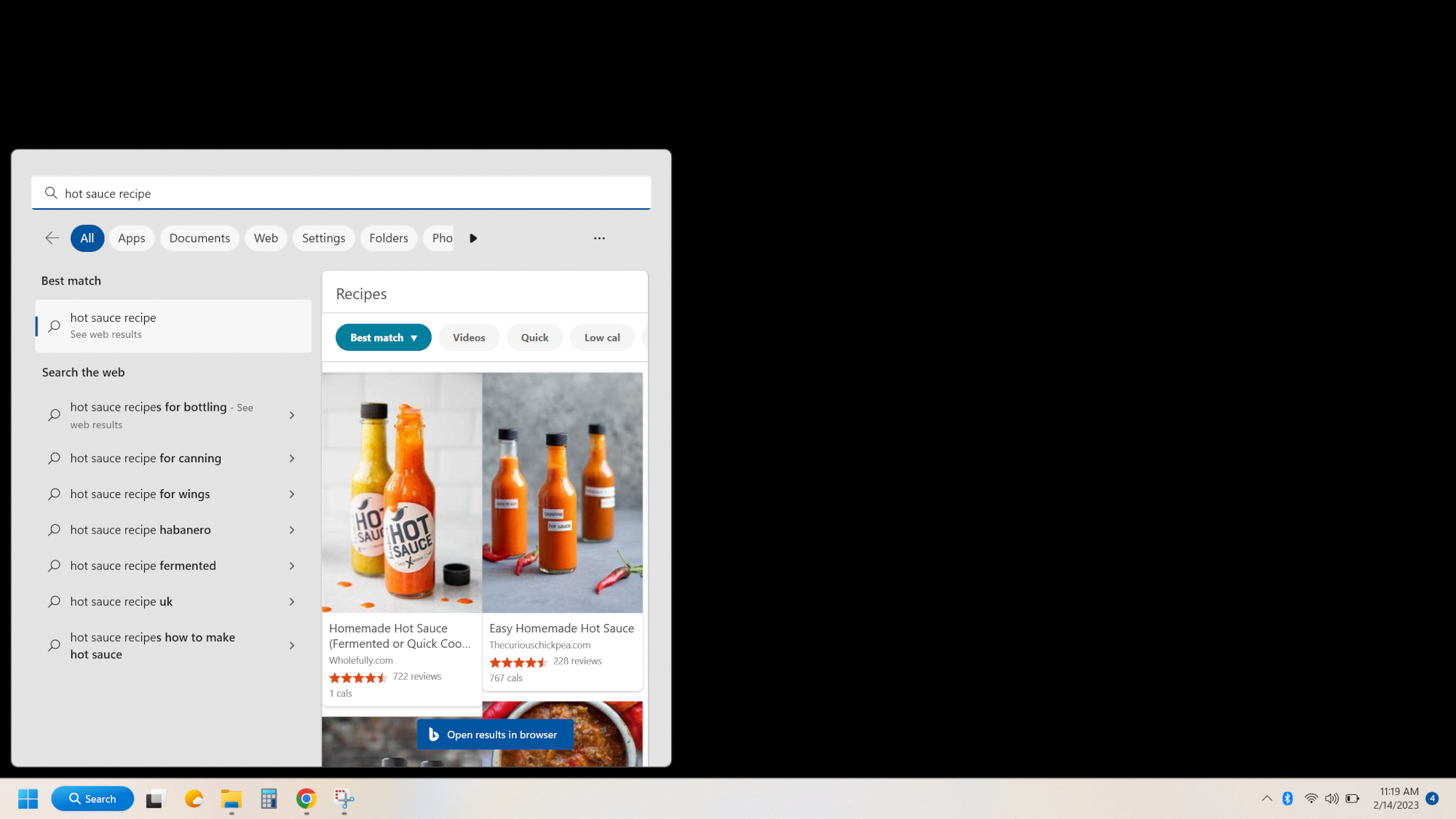

Once upon a time, you could open the Windows Start menu, type the name of the program or file you wanted to open, and hit enter. It was the fastest way to open an app. You can bring those days back.
At some point, Microsoft decided to start answering queries by showing web results from its search engine, Bing, alongside local results from your computer. This is occasionally useful but consistently slows down the Start menu search—annoying if you just want to open a certain app or file with a couple of keystrokes.
Some people might like this feature, and are maybe even looking forward to artificial intelligence wriggling in there later on. I don’t, and am not, so I figured out how to turn Bing off. It turns out the option isn’t in the settings: you have to edit the registry. I have tested the following method on both Windows 10 and 11.
First edit the registry
To get started, you will need to open the Registry Editor, which you can find in the Windows Start menu. Generally, it’s not a good idea to make changes in the Registry Editor unless you fully understand what will happen. Ill-conceived registry edits could break features or even prevent Windows from booting. Here, though, you will be making a single policy that only does one thing: removes Bing from the Start menu.
Browse to the folder ComputerHKEY_CURRENT_USERSoftwarePoliciesMicrosoftWindowsExplorer in the left pane, right-click the empty space in the right panel, and select DWORD (32-bit) Value.

Name the value “DisableSearchBoxSuggestions”, without the quotation marks, and set the Value data to “1”.
Click OK, then close the Registry Editor. You can undo the change later by setting this value to “0”.
Restart Windows Explorer
The change won’t take effect immediately, which you will notice if you attempt to open the Start menu shortly after editing the registry. Don’t worry: you just have to restart the Explorer. You can do this with the Task Manager, which you can find in the Start menu or by using the keyboard shortcut Ctrl-Shift-Esc. Find the application called “Windows Explorer” by searching or scrolling, then click Restart. Your taskbar and desktop will briefly disappear, but when they reload you will no longer see Bing results in the Start menu.
[Related: Microsoft is betting ChatGPT will make Bing useful]
I, personally, found my searches were noticeably faster after making this change, especially on my older Windows 10 device. I wish Microsoft had made this change a little easier to make, but I’m glad it’s at least possible.

